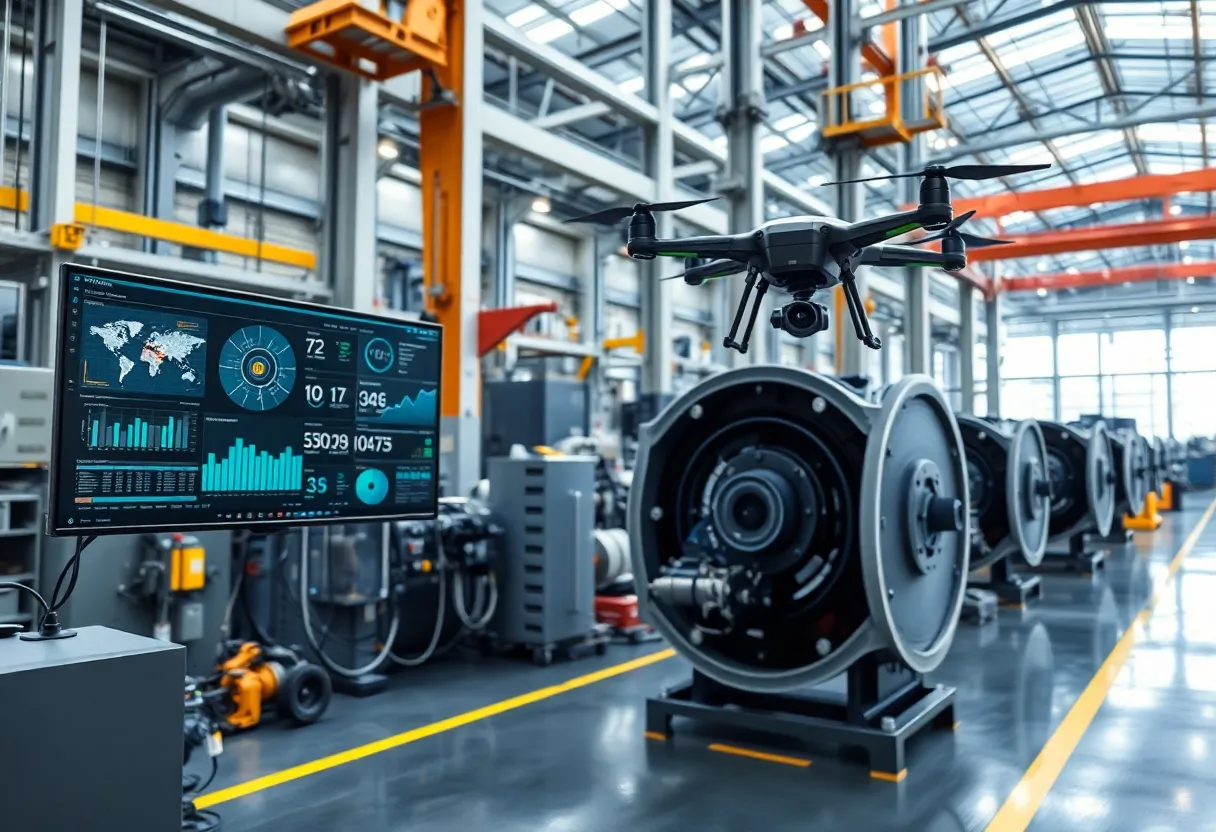Tucson, October 23, 2025
Tucson industries are transforming through advanced technologies like AI and predictive analytics, enhancing maintenance practices. These innovations help anticipate equipment failures, optimize workflows, and reduce downtime. Companies such as Raytheon adopt drone inspections to minimize disruptions, achieving a 30% decrease in downtime. The sector, employing over 10,000 workers in Pima County, faces supply chain challenges while also fostering growth in renewable energy maintenance, vital for economic stability and environmental goals.
Industrial Maintenance Revolutionizes Operations in Tucson
AI and Predictive Analytics Drive Efficiency Gains
Tucson, AZ – October 23, 2025: Local industries are undergoing a significant transformation as advanced technologies like artificial intelligence (AI) and predictive analytics reshape industrial maintenance practices. These tools enable companies to anticipate equipment failures before they occur, reducing unexpected breakdowns and enhancing overall productivity. In Pima County, this shift is particularly evident in the manufacturing and technology sectors, where downtime minimization has become a top priority.
The adoption of these innovations allows for real-time monitoring of machinery, helping businesses optimize their workflows. For instance, predictive models analyze data from sensors to forecast maintenance needs, ensuring that repairs happen proactively rather than reactively. This approach not only cuts costs but also extends the lifespan of critical equipment, providing a competitive edge in a fast-paced market.
Drone Inspections Reduce Downtime Significantly
Leading the charge in Tucson’s industrial landscape are companies like Raytheon, which are implementing drone inspections to streamline maintenance processes. Drones equipped with high-resolution cameras and sensors can access hard-to-reach areas of large facilities, performing thorough assessments without the need for manual labor or scaffolding. This method has reportedly reduced downtime by 30% in facilities where it’s been adopted, allowing operations to resume faster and with fewer disruptions.
Beyond drones, other cutting-edge solutions such as automated robotic systems and machine learning algorithms are gaining traction. These technologies help identify wear and tear patterns that traditional methods might overlook, leading to more precise interventions. As a result, Tucson’s industrial sites are seeing improved safety standards, as workers are exposed less to hazardous environments during inspections.
Challenges and Opportunities in the Sector
Despite these advancements, the industrial maintenance sector in Tucson faces notable hurdles. Supply chain disruptions continue to affect the availability of spare parts and specialized components, which can delay even the most efficient maintenance schedules. Recent global events have exacerbated these issues, forcing companies to rethink sourcing strategies and build more resilient inventories.
On the positive side, the sector is experiencing growth in renewable energy maintenance. With Tucson’s increasing focus on sustainable technologies, maintenance demands for solar panels, wind turbines, and other green infrastructure are rising. This expansion creates new job roles, particularly for technicians skilled in both traditional and digital maintenance techniques. The integration of AI in these areas ensures that renewable systems operate at peak efficiency, supporting broader environmental goals while bolstering the local economy.
Sector’s Role in Pima County’s Economy
The industrial maintenance field employs over 10,000 workers in Pima County, making it a cornerstone of the region’s economy. This workforce spans a variety of roles, from engineers specializing in AI applications to field technicians handling on-site repairs. The emphasis on efficiency is driven by the need to remain competitive in both national and international markets, where delays can lead to lost contracts and revenue.
Innovation in maintenance practices also attracts investment to Tucson, positioning it as a hub for manufacturing and technology. Companies are investing in training programs to upskill employees, ensuring they can handle the complexities of modern tools. This ongoing development promises long-term economic stability, as the sector adapts to emerging challenges like climate change impacts on infrastructure.
Future Outlook for Tucson’s Manufacturing Hub
Looking ahead, the continued evolution of industrial maintenance holds great potential for Tucson. The blend of digital technologies and traditional expertise is fostering a more agile manufacturing environment. As renewable energy projects proliferate, maintenance innovations will play a key role in sustaining growth. While supply chain issues persist, local firms are exploring partnerships and domestic suppliers to mitigate risks.
Overall, these changes underscore Tucson’s commitment to innovation and efficiency. By leveraging AI, drones, and predictive analytics, the city is not only addressing current operational needs but also paving the way for sustainable development in its industrial core. This dynamic shift ensures that Pima County’s manufacturing hub remains a vital contributor to the area’s prosperity.
Frequently Asked Questions
What technologies are revolutionizing industrial maintenance in Tucson?
Advanced technologies like artificial intelligence (AI) and predictive analytics are revolutionizing industrial maintenance in Tucson by enabling real-time monitoring and anticipating equipment failures.
How are drone inspections being used in Tucson’s industries?
Companies like Raytheon are implementing drone inspections to access hard-to-reach areas, performing thorough assessments and reducing downtime by 30%.
What challenges does the industrial maintenance sector in Tucson face?
The sector faces challenges from supply chain disruptions affecting the availability of spare parts and specialized components.
How many people are employed in industrial maintenance in Pima County?
The industrial maintenance field employs over 10,000 workers in Pima County.
What growth areas are seen in Tucson’s industrial maintenance?
The sector sees growth in renewable energy maintenance, with demands for solar panels, wind turbines, and other green infrastructure rising.
Key Features of Industrial Maintenance in Tucson
| Feature | Description | Impact |
|---|---|---|
| AI and Predictive Analytics | Enable real-time monitoring and anticipation of equipment failures | Enhances productivity and reduces unexpected breakdowns |
| Drone Inspections | Access hard-to-reach areas with high-resolution cameras and sensors | Reduces downtime by 30% in adopting facilities |
| Supply Chain Challenges | Disruptions in spare parts and components availability | Delays maintenance schedules, prompting resilient strategies |
| Renewable Energy Maintenance | Growing demands for solar panels and wind turbines | Supports sustainable development and job creation |
| Employment in Pima County | Over 10,000 workers in the field | Contributes to economic stability in manufacturing hub |
Deeper Dive: News & Info About This Topic
HERE Resources
Arizona Sues Tucson Electric Power Over Landfill Issues
Tucson Port Unveils $30 Million Logistics Expansion
Tragic Industrial Accident Claims Life of Worker in Tucson
Worker Injured in Possible Industrial Accident in Tucson
Tucson’s Slaughterhouse Haunted Attraction Returns for Final Season




